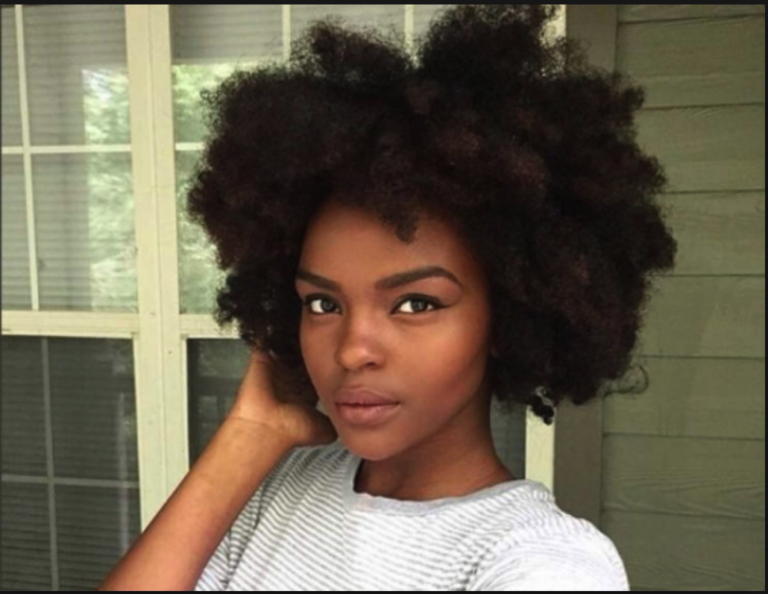Determining your hair type will assist you in choosing the correct products and styles for your hair. The hair type chart was created by Andre Walker, Oprah’s stylist, who created a spectrum of hair types that classifies various hair textures and patterns with different subcategories from A to C. If you ever wanted to know your hair type, keep on reading.
Type 1 – Straight Hair:
Type 1 hair is straight hair. This hair type is seen in a lot of Caucasians. It has the most shine and is resilient of all the four hair types. It is very difficult to damage; therefore bleach doesn’t affect their hair as much. In addition, it is very hard to cur. Their hair is very moisturized from the natural sebum on their scalp because it is able to travel down the hair strand.

Type 2 – Wavy Hair:
Wavy hair is in the middle of straight and curly hair. Therefore, it is isn’t 100% straight nor 100% curly. The hair is shiny however it is prone to frizz. A lot of wavy hair female use anti-frizz and anti-humidity products to keep their curls intact. The less manipulation, the less frizz that will occur. An example of a curl definer that will reduce frizz and enhance shine would be the Curl Gel-les’c.

Type 3 – Curly Hair:
Curly hair has a defined S shape, whether lower or upper case. There is a definite curl pattern as opposed to type 2 hair. 3a hair spirals are similar in size. 3b curls are ringlets which have the circumference of a sharpie. And, 3c curls are tighter, therefore their ringlets have the circumference of a pencil or straw. Type 3 hair is voluminous, prone to humidity, frizz and damage. In addition, lack of proper care will give you dull curls. Type 3 hair is fine; therefore, a lot of product does not need to be applied to weigh down or greasy hair. A great curl cream to enhance the curls and promote moisture is the Curls Soufflé. In addition, you want to avoid drying ingredients in your products such as sulphates, parabens, mineral and much more because they do contribute to frizz.

Products recommendations : Curls Milkshake,Curl Soufflé, Hair Rules Curly Whip

Products recommendations : Curls Milkshake,Curl Soufflé, Miss Jessie’s Jelly Soft Curls

Products recommendations : Curls Milkshake,Curl Soufflé, Carol’s Daughter Hair Milk Cleansing Conditioner
Quick Tips:
– You can stretch the hair safely, without heat, by doing a twist-out, bantu-knot out, flexi rod set, braid-out or perm rod set.
– Use humidity blocking styling products such as creams or milk for more definition, and less frizz.
– Twirl loose or heat damaged curls around your finger while your hair is still wet, to encourage it’s definition.
Type 4 – Kinky Hair:
Most African Americans fall into this category. 4a hair has a small “S” pattern if it is 4a, or a “Z” if it is 4b. 4a corkscrews have the circumference of a crochet needle. 4b has tighter corkscrews similar to the spring of a pen. Lastly, 4c is similar to type 4b hair however it has greater shrinkage and density. This hair type is driest of them all because the natural sebum isn’t able to travel down to the tip of the hair because of the curl pattern and the oil can only travel in a straight line. In addition, it is the most fragile of all four, and if not treated properly it will break off. It needs way more attention, and care, unlike the other types. It needs moisturize on a frequent basis to prevent its dryness and breakage. In addition, to improve the elasticity of the hair which brings it to an optimal healthy stage.

If you fall into this category your curls are dense and springy. In addition, they are wiry or fine. The curls form a small circumference similar to the eye of a crochet needle. The hair is tightly coiled with a prominent S pattern. When caring for this hair type you want to use light products to avoid weighing down your hair. In addition, you may detangle with a comb since the comb will have fewer curls to manoeuvre through. As well as, not so thick gels are great because they will define the already visible pattern. If you want to maximize moisture, use thick and natural emollients such as mango and shea butter when styling your hair. Lastly, if you want to retain length wearing hairstyles such as wash and gos, twist-outs and braid-outs.
Products recommendations : Whipped Cream – Heavy Curl Cream,Viva Naturals Organic Extra Virgin Coconut Oil

Instead of your hair curling or coiling, it shapes like the letter Z. Therefore, the hair bends at very sharp angles. The curls are tighter than 4a, therefore there is less definition. The strand can range from fine, to medium, to thick. The curls resemble the spring of a pen. When caring for 4b hair, you will have to use more gel than an individual with 4a hair. In addition, you can pre-poo with oils such as coconut and castor to retain the scalp’s sebum. Lastly, proper moisturization and frequent deep conditioning will help combat dryness which contributes to breakage
Products recommendations : Whipped Cream – Heavy Curl Cream,Viva Naturals Organic Extra Virgin Coconut Oil

Your coils will be similar to the 4b hair pattern however it will be a higher density. Therefore, there will be more hair strands per square inch on your scalp. In addition, the strands will be coarse. therefore wider. This contributes to the greatest shrinkage that 4c naturals have and less definition. 4c hair is the most fragile within the 4-hair type range. Products that should be used are creamy leave-in conditioners to moisturize the hair, thick gels to define all of the curls, thick oils to properly seal the moisture in and thick emollients such as shea and cupuacu butter. Styles such as braid outs, twist outs or cornrows help to stretch the hair to combat the constant shrinkage. As well as, protective styles assist in avoiding daily manipulation which results in breakage.
Products recommendations : Kinky Curly Curling Custard,Viva Naturals Organic Extra Virgin Coconut Oil, Cupuacu Butter
Quick Tips:
– Use products rich in emollients such as shea butter for moisture
– Pre-pooing with coconut or castor oil to retain the naturals on the scalp
– Use a leave in with humectant properties to protect your hair from the harsh elements of the environment.
Hair typing is just a guide to use to assist you in caring for your hair. Remember that two women with the same curl pattern can have hair that does not the look the same. There are other contributing factors such as porosity, length, width and density. As with all things in life, it takes trying different products, and styles to see what works your hair. Grouping the hair into different types makes it easier for you to maintain your hair by communicating with individuals with similar hair types to see what works for them.



0 Comments